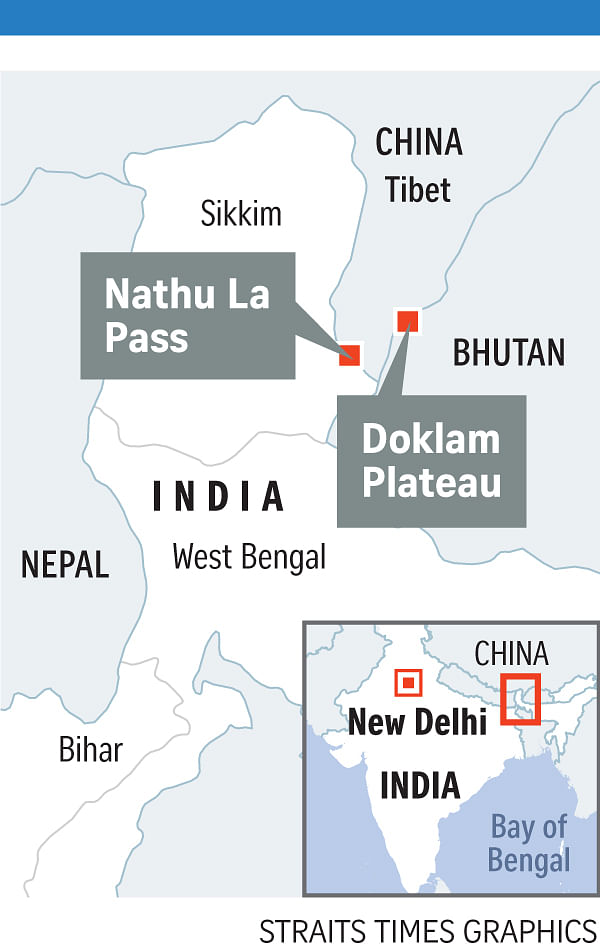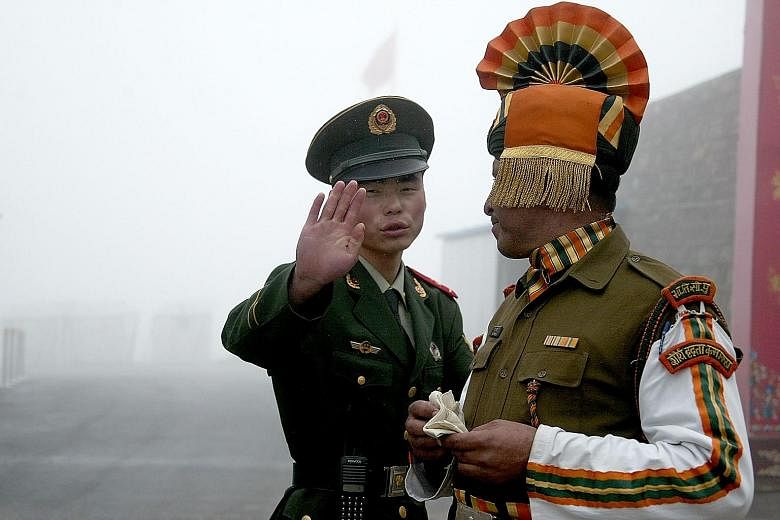A four-week border stand-off between India and China is exposing bilateral tensions and fanning nationalistic sentiments on both sides of the Himalayas.
The row began on June 16, when Indian border troops approached a People's Liberation Army road construction group to stop building a road in an area claimed by both Bhutan and China. India said it was asked to intervene by Bhutan and that the construction had implications on its own security. China, which said Indian troops had stopped the construction, accused India of intruding into its territory.
Over the last weekend, China issued a travel advisory asking its nationals to be careful in India, capping weeks of sharp rhetoric that has included Chinese officials asking India to pull back troops unconditionally.
India has increased its troop strength in the area to 3,000 soldiers, according to Indian media reports, and has shown no inclination of pulling back troops.
Even a five-minute meeting between Indian Prime Minister Narendra Modi and Chinese President Xi Jinping on the sidelines of the Group of 20 meeting in Hamburg, Germany, last week was interpreted differently by both sides.
The Indian spokesman said the two leaders had "a conversation on a range of issues", while a Chinese spokesman maintained that no bilateral meeting took place.
The media in both countries has reflected the growing tensions, with the more nationalistic newspapers talking about the possibility of a war. China's nationalist newspaper Global Times warned in an editorial on July 4 that India should be "taught a bitter lesson" and would suffer "greater losses" in a war. A headline of an opinion piece on Monday in Firstpost, an Indian online news portal, noted: "Another war with India will be an economic blunder for China."

-
About the dispute
-
At issue is a plateau lying at a junction near India's north-eastern state of Sikkim, China and Bhutan.
It lies in an area that is under dispute between Bhutan and China, which do not have diplomatic ties. China says the plateau is part of its Donglang region. India, which calls it the Doklam plateau, supports Bhutan's claims.
The row arose when Indian border guards intervened to halt China's road- building on June 16. India, which said it had taken the action in coordination with the Bhutan government, has since expressed concern and said it has "deep security implications".
Indian concerns are that it brings China closer to a narrow stretch of land known as the Silliguri corridor or the "chicken's neck", which connects seven north-eastern Indian states to the mainland.
China accused India of entering Chinese territory. Troops from both sides are in a four-week stand-off.
Bhutan called the road construction a violation of past agreements.
The two neighbours, which fought a war over the border in 1962, have a festering dispute along several areas of their 4,000km- long border, which is poorly demarcated in many areas.
While border rows flare up intermittently, the two countries made a decision in the 1990s to not allow such disputes to affect other areas of the relationship. As a result, economic ties have grown, with China being India's top trading partner.
Experts said the current row is one of the longest stand-offs between the two sides since the war in 1962. "Ties are under stress... the bonhomie that was there two to three years ago (between the leaders) has started to dwindle," said Professor Alka Acharya, a former director of the New Delhi-based Institute of Chinese Studies.
Former Indian foreign secretary Lalit Mansingh said: "Mr Modi has built up this tough image back home to defend interests and punish those harming India. That rhetoric is leading to heightened expectations from the government."
Chinese rhetoric is also more strident than before, he noted.
The growing proximity between India and the United States is also a cause of worry for China, experts said.
On Monday, India, Japan and the US kick-started the annual Malabar exercises, which China believes are part of a bid to contain its influence.
An editorial in China Daily on Monday said the exercises and the defence cooperation, which includes the US selling a military transport aircraft and surveillance drones to India, showed it is "China that should feel 'security concerns', given the importance of the Indian Ocean for its trade and oil imports".
The row comes amid India's boycott of China's Belt and Road Initiative on the grounds that it passes through disputed territory in Pakistan. This was preceded by the exiled Tibetan spiritual leader, the Dalai Lama, visiting the state of Arunachal Pradesh, which China claims as its own.
China has also blocked India's membership of the Nuclear Suppliers Group, comprising nuclear supplier countries seeking to prevent nuclear proliferation by controlling the export of materials. India wants to be a member to improve its chances of buying sensitive dual- use technology and encourage other countries to invest in its nuclear sector.
Still, experts say China and India are unlikely to escalate tensions beyond a point or go to war.
At an event yesterday in Singapore, Indian Foreign Secretary S. Jaishankar said: "It is a long border, as you know, no part of the border has been agreed upon on the ground. It is likely that, from time to time, there are differences."
Professor Srikanth Kondapalli, a China expert at Jawaharlal Nehru University, said: "There is a lot of heartburn in bilateral ties. But there is no massive military build-up."
SEE HOME

